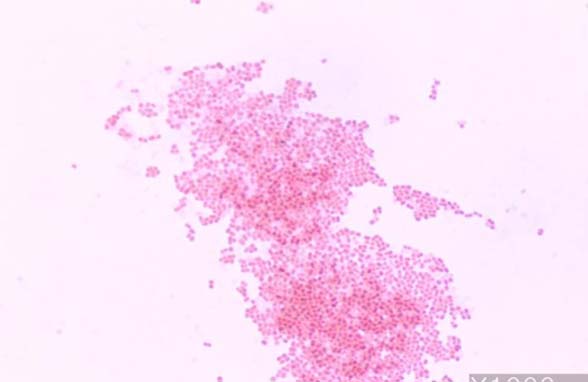Infect Chemother.
2009 Aug;41(4):240-244. 10.3947/ic.2009.41.4.240.
A Case of Multidrug-resistant Acinetobacter baumannii Ventriculitis Successfully Treated with Intrathecal Colistimethate
- Affiliations
-
- 1Department of Internal Medicine, College of Medicine, The Catholic University of Korea, Seoul, Korea. jhyoo@catholic.ac.kr
- KMID: 1473674
- DOI: http://doi.org/10.3947/ic.2009.41.4.240
Abstract
- Acinetobacter species is a non-fermentative aerobic gram-negative coccobacillus that is an important pathogen found in nosocomial infections. Recently, multi-drug resistant Acinetobacter baumannii (MDR-AB) infections have been increasing and pose a serious problem. Most such infections present as bacteremia, pneumonia, or a wound infection; however, CNS infections are very rare. We herein present a case of ventriculitis caused by MDR-AB in a 37-year old man after a neurosurgical intervention. The patient was successfully treated with intrathecal colistimethate.
MeSH Terms
Figure
Cited by 1 articles
-
Infectious Complications after Neurosurgery: Mainly Focusing on Ventriculitis and Meningitis
Jin-Hong Yoo
Infect Chemother. 2011;43(3):229-233. doi: 10.3947/ic.2011.43.3.229.
Reference
-
1. Bergogne-Bérézin E, Towner KJ. Acinetobacter spp. as nosocomial pathogens: microbiological, clinical, and epidemiological features. Clin Microbiol Rev. 1996. 9:148–165.
Article2. Blot S, Vandewoude K, Colardyn F. Nosocomial bacteremia involving Acinetobacter baumannii in critically ill patients: a matched cohort study. Intensive Care Med. 2003. 29:471–475.
Article3. Jawad A, Heritage J, Snelling AM, Gascoyne-Binzi DM, Hawkey PM. Influence of relative humidity and suspending menstrua on survival of Acinetobacter spp. on dry surfaces. J Clin Microbiol. 1996. 34:2881–2887.
Article4. Fournier PE, Richet H. The epidemiology and control of Acinetobacter baumannii in health care facilities. Clin Infect Dis. 2006. 42:692–699.
Article5. Fernandez-Viladrich P, Corbella X, Corral L, Tubau F, Mateu A. Successful treatment of ventriculitis due to carbapenem-resistant Acinetobacter baumannii with intraventricular colistin sulfomethate sodium. Clin Infect Dis. 1999. 28:916–917.
Article6. Vasen W, Desmery P, Ilutovich S, Di Martino A. Intrathecal use of colistin. J Clin Microbiol. 2000. 38:3523.
Article7. Ho YH, Wang LS, Chao HJ, Chang KC, Su CF. Successful treatment of meningitis caused by multidrug-resistant Acinetobacter baumannii with intravenous and intrathecal colistin. J Micobiol Immunol Infect. 2007. 40:537–540.8. Katragkou A, Roilides E. Successful treatment of multidrug resistant Acinetobacter baumannii central nervous system infections with colistin. J Clin Microbiol. 2005. 43:4916–4917.
Article9. Ng J, Gosbell IB, Kelly JA, Boyle MJ, Ferguson JK. Cure of multiresistant Acinetobacter baumannii central nervous system infections with intraventricular or intrathecal colistin: case series and literature review. J Antimicrob Chemother. 2006. 58:1078–1081.
Article10. Seifert H, Richter W, Pulverer G. Clinical and bacteriological features of relapsing shunt-associated meningitis due to Acinetobacter baumannii. Eur J Clin Microbiol Infect Dis. 1995. 14:130–134.
Article11. Bonomo RA, Szabo D. Mechanisms of multidrug resistance in Acinetobacter species and Pseudomonas aeruginosa. Clin Infect Dis. 2006. 43:Suppl 2. 49–56.12. Falagas ME, Kasiakou SK. Colistin: the revival of polymyxins for the management of multidrug-resistant gram-negative bacterial infections. Clin Infect Dis. 2005. 40:1333–1341.
Article13. Benedict RG, Langlykke AF. Antibiotic activity of Bacillus polymyxa. J Bacteriol. 1947. 54:24–25.14. Wang KW, Chang WN, Huang CR, Tsai NW, Tsui HW, Wang HC, Su TM, Rau CS, Cheng BC, Chang CS, Chuang YC, Liliang PC, Tsai YD, Lu CH. Post-neurosurgical nosocomial bacterial meningitis in adults: microbiology, clinical features, and outcomes. J Clin Neurosci. 2005. 12:647–650.
Article15. Kunin CM, Bugg A. Binding of polymyxin antibiotics to tissues: the major determinant of distribution and persistence in the body. J Infect Dis. 1971. 124:394–400.
Article16. Craig WA, Kunin CM. Significance of serum protein and tissue binding of antimicrobial agents. Ann Rev Med. 1976. 27:287–300.
Article17. Jiménez-Mejías ME, Pichardo-Guerrero C, Máquez-Rivas FJ, Martín-Lozano D, Prados T, Pachón J. Cerebrospinal fluid penetration and pharmacokinetic/pharmacodynamic parameters of intravenously administered colistin in a case of multidrug-resistant Acinetobacter baumannii meningitis. Eur J Clin Microbiol Infect Dis. 2002. 21:212–214.
Article
- Full Text Links
- Actions
-
Cited
- CITED
-
- Close
- Share
- Similar articles
-
- Extreme Drug Resistant Acinetobacter Nosocomial Ventilator-Associated Pneumonia Treated Successfully with Tigecycline and Amikacin in Intensive Care Unit: A Case Report
- Successful Management of Pan-Resistant Acinetobacter baumannii Meningitis without Intrathecal or Intraventricular Antibiotic Therapy in a Neonate
- A Case of Keratitis Caused by Combined Infection of Multidrug-Resistant Acinetobacter Baumannii and Candida Parapsilosis
- Multidrug-resistant Acinetobacter baumannii infection in the intensive care unit
- Clinical Features of Acinetobacter Baumannii Keratitis


